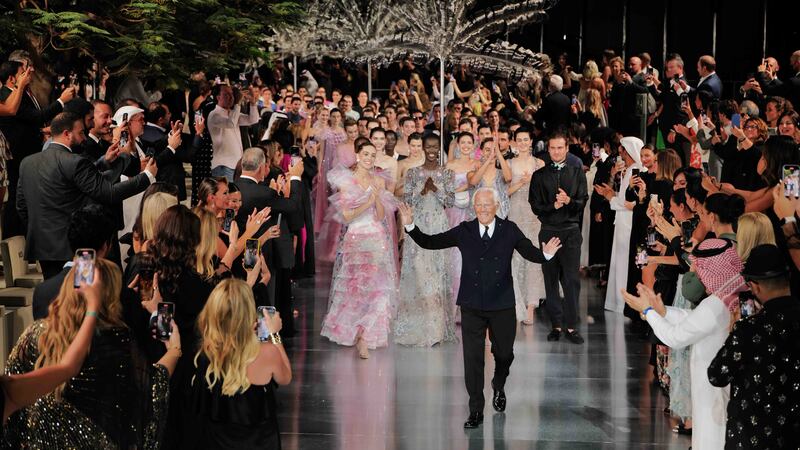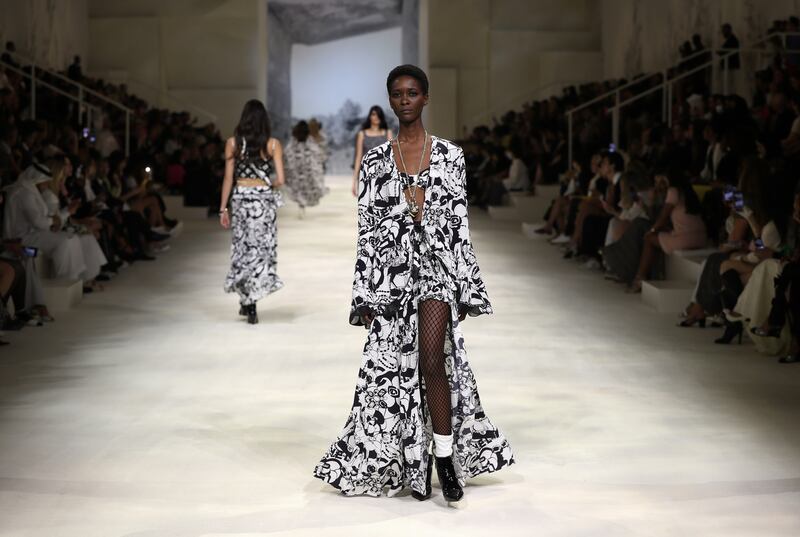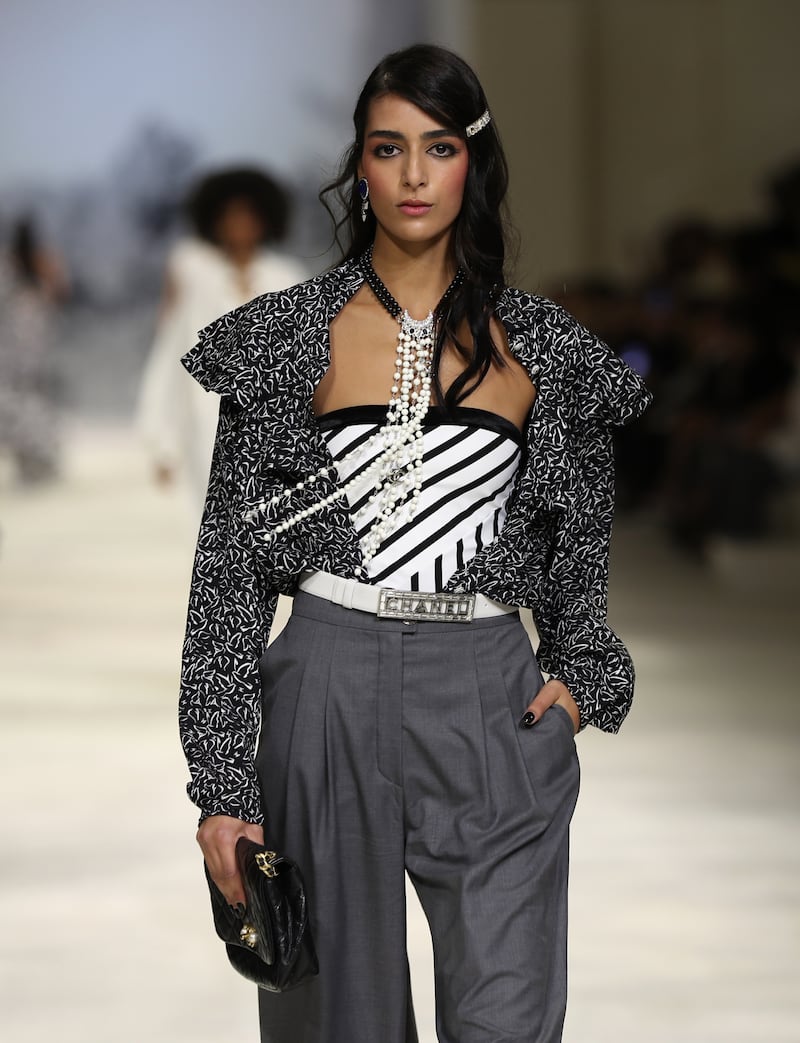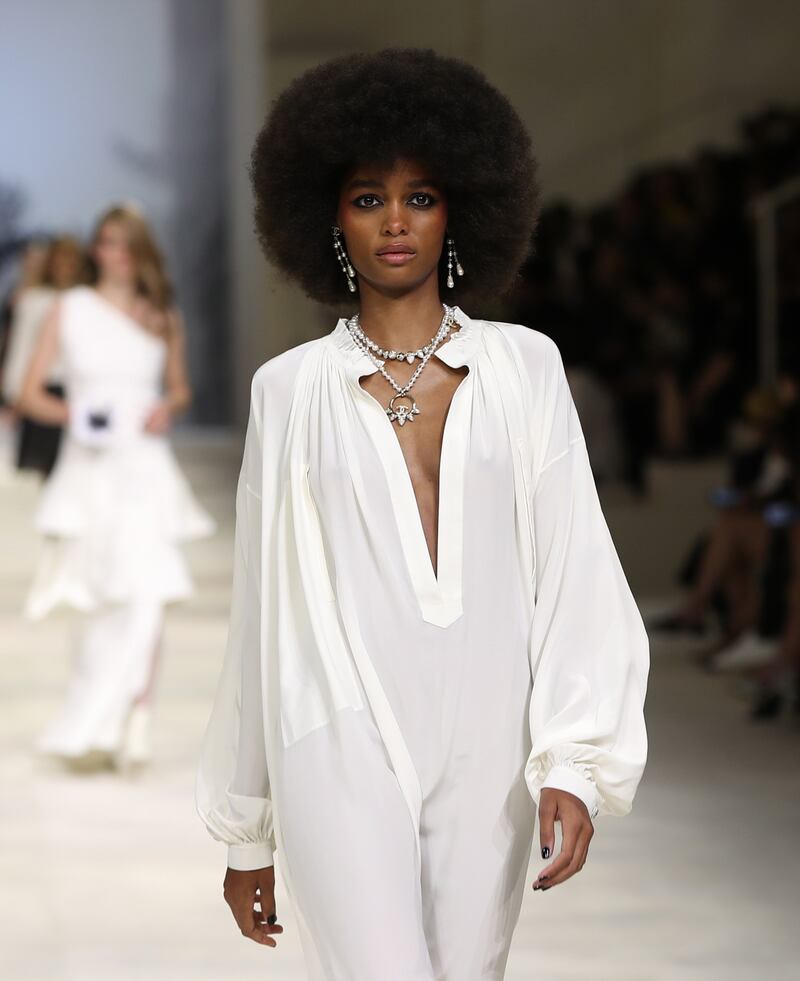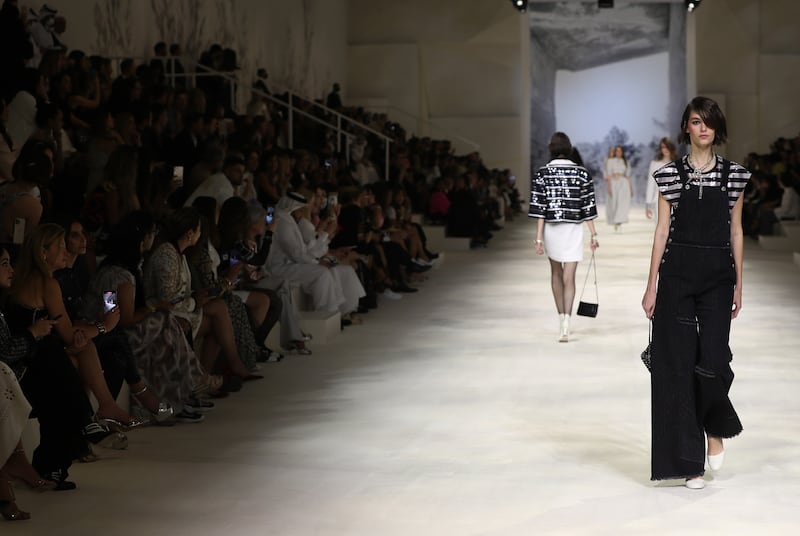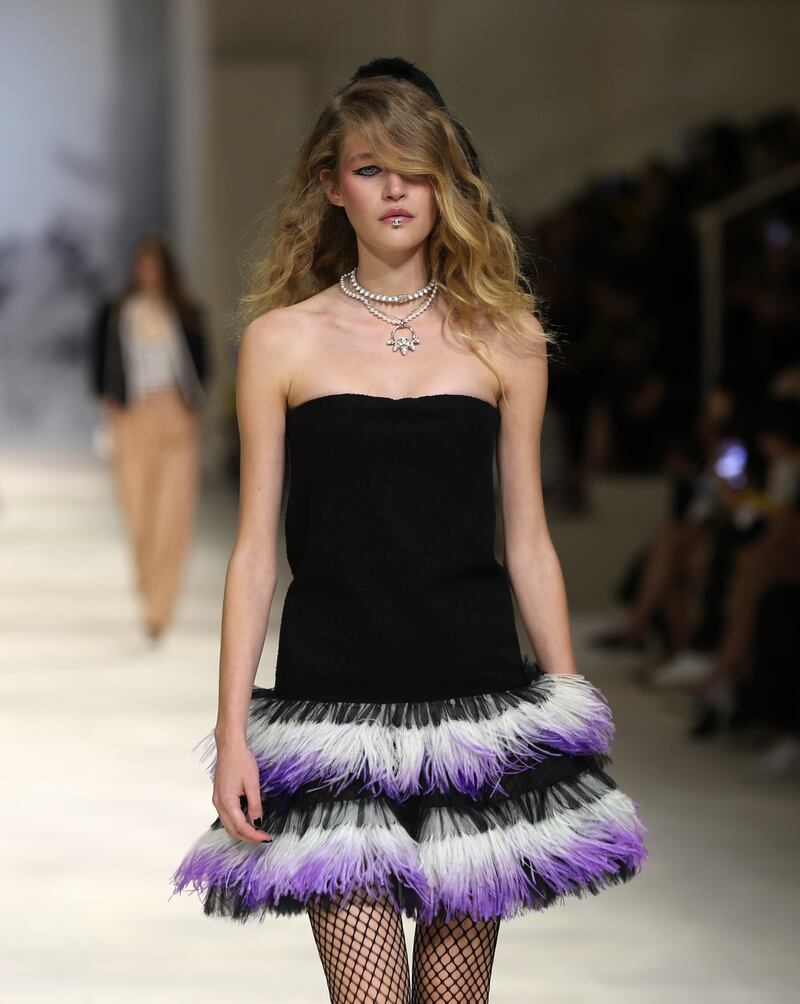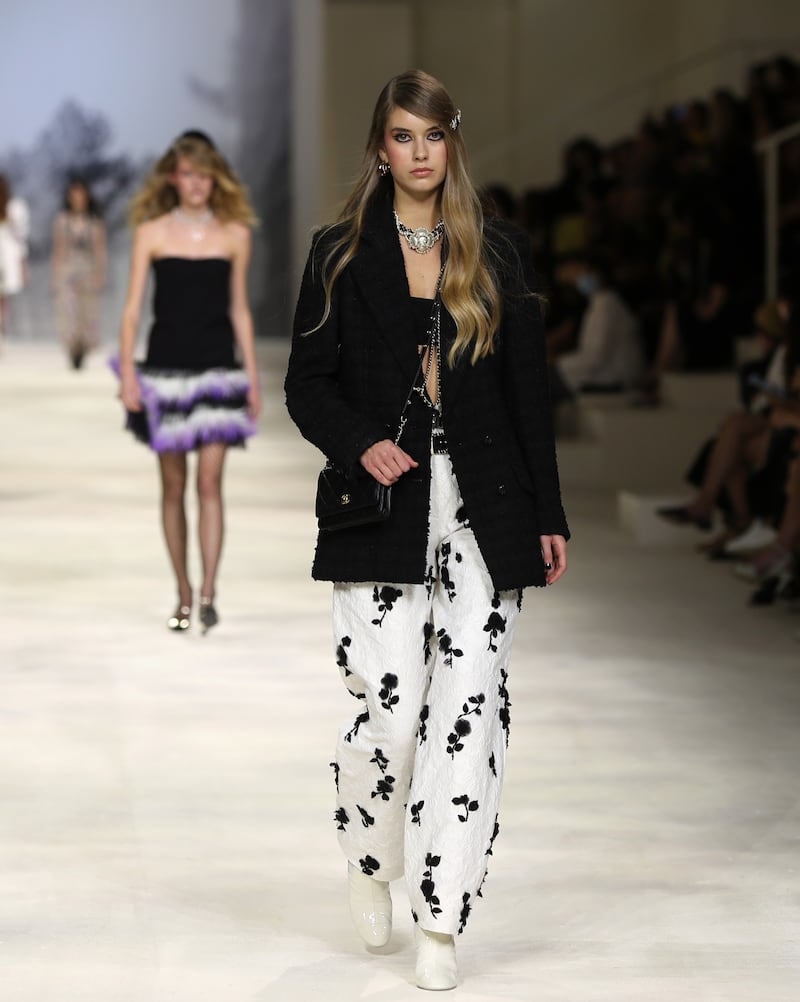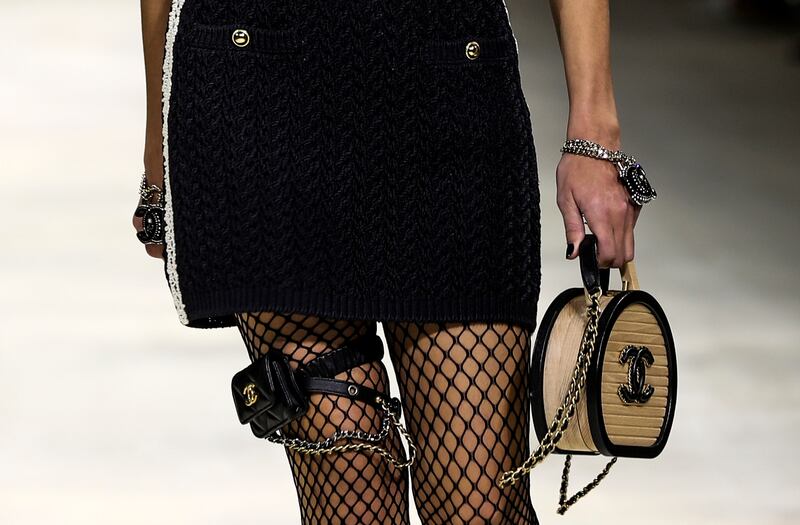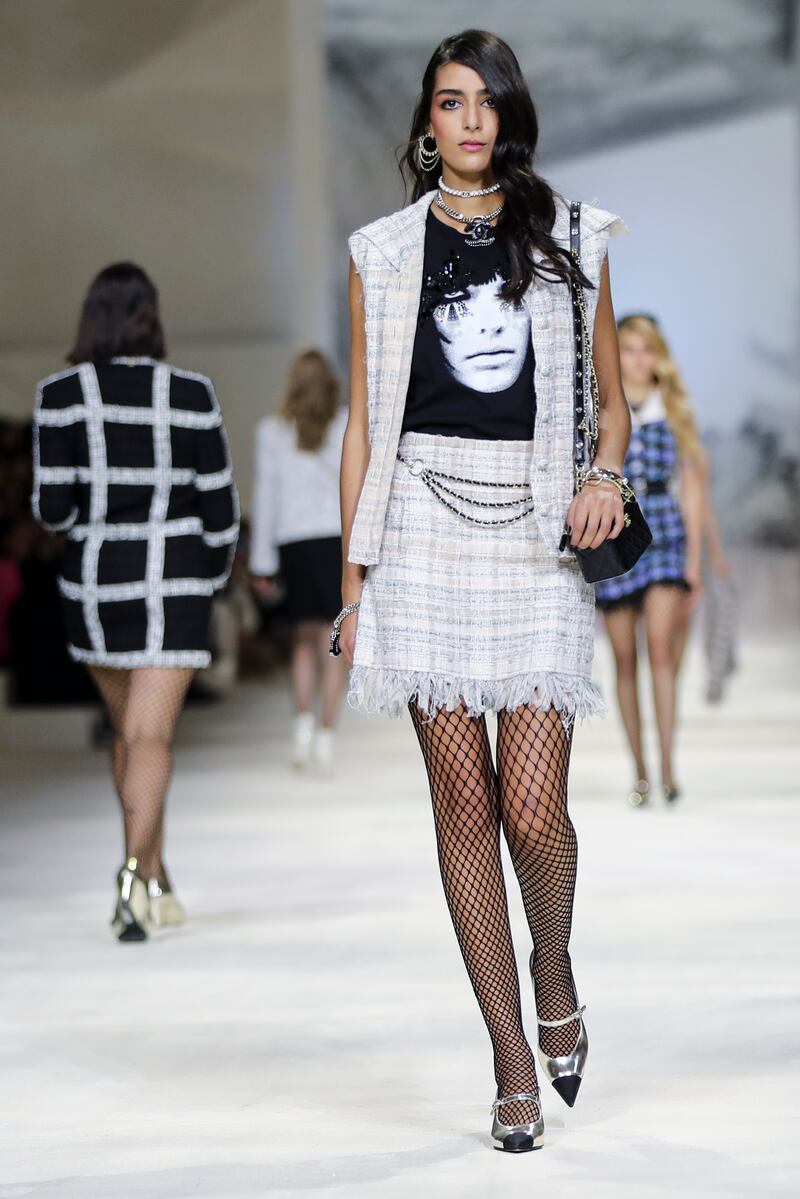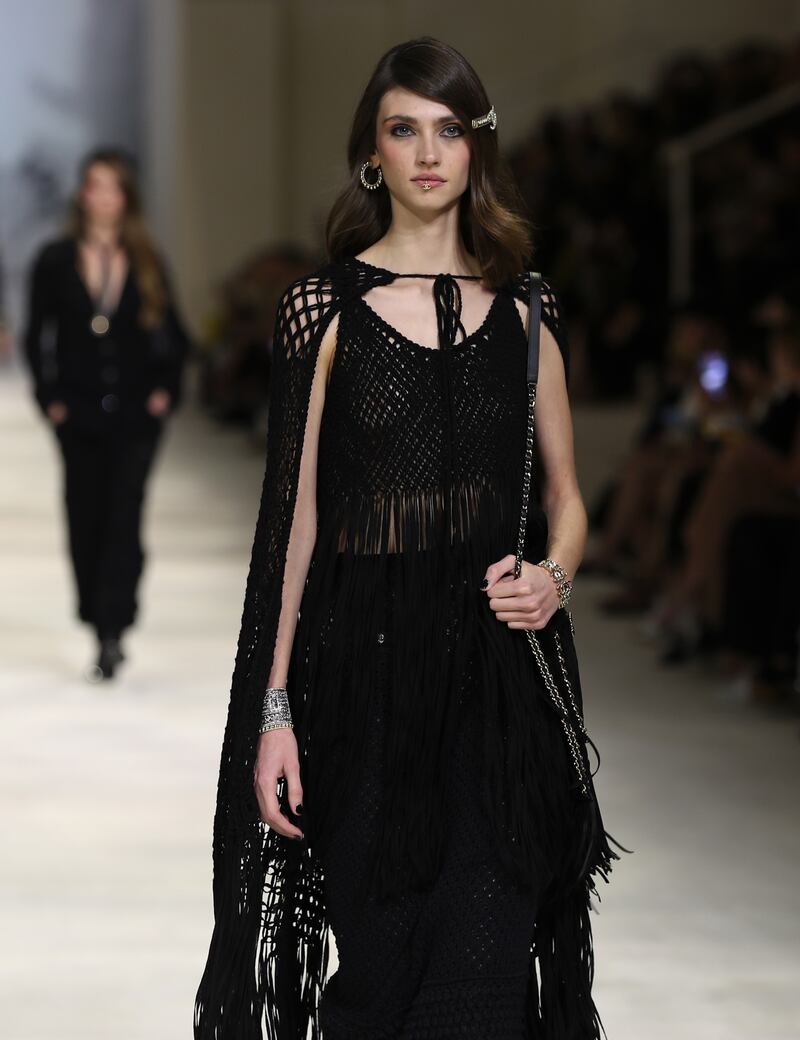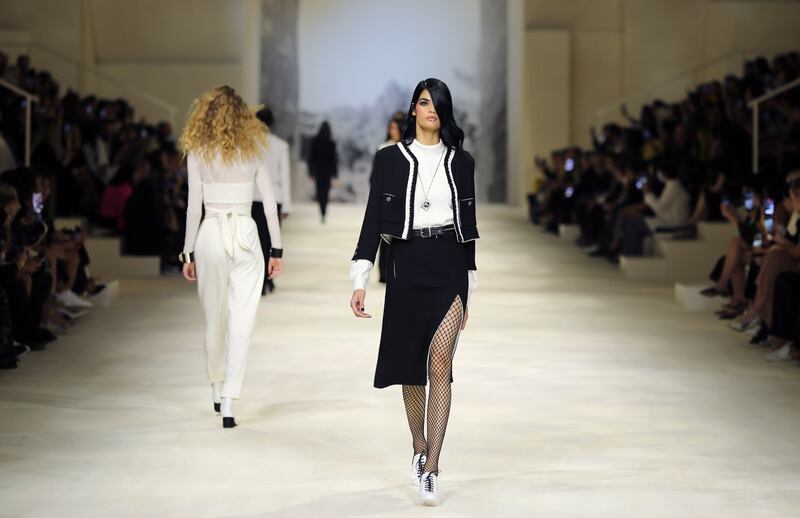If further proof was needed of the UAE’s growing prominence on the global fashion scene, it was enthusiastically provided by Giorgio Armani when he hosted his One Night Only fashion show at the foot of Burj Khalifa in October. His dazzling parade of womenswear, menswear and couture was promptly followed by Chanel bringing its cruise replica show to Dubai a week later, strengthening the emirate’s bid to become a global fashion capital.
The two shows built on the excitement generated by the launch of Expo 2020 Dubai, and were trailed by parties, launches and high-profile events such as the Global Gift Gala, which made its Abu Dhabi debut in December.
The overall mood was celebratory, something that Armani touched upon in an interview with The National while he was in Dubai. “I believe that Dubai is a really dynamic place, a truly modern city with enormous energy,” he said. “I love the metropolitan lifestyle and when a city is really attracting attention, investment and business, it becomes a magnet for interesting people.”
See photos of the Chanel 2021-22 cruise show in Dubai:
Chanel’s president of fashion Bruno Pavlovsky, echoed these sentiments: “We are happy to be in Dubai, we have a wonderful location, a wonderful show, there is an amazing energy that you can feel in the region. Chanel is very happy to be here.”
Two years of disruption
However, while the mood in the region is upbeat, globally the fashion industry is still reeling from the effects of the pandemic, with many casualties among designer and mid-market brands.
After two years of disruption, the industry is only just beginning to find its feet again, according to the Business of Fashion’s authoritative annual The State of Fashion report for 2022, produced in partnership with McKinsey & Company. The success of vaccination programmes has raised confidence.
Consumer demand in Europe has been cautious, but in the US the release of pent-up demand created spikes of so-called “revenge buying," leading to a growth spurt that echoed an earlier phenomenon in China. Return-to-work and occasion styles topped people’s shopping lists.
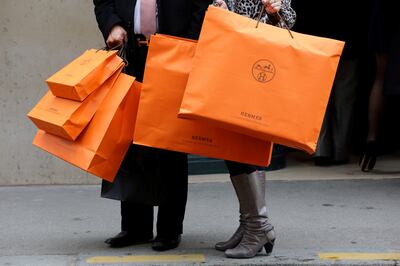
According to the report, a small group of leading brands are equalling, and in some cases already surpassing, their pre-pandemic performances. LVMH, Hermes and Kering have been posting strong sale figures in the second half of this year. Discount and luxury fashion will continue to perform well but the mid-market will be squeezed. There is no universal return to form predicted in the report, and many companies will continue to struggle as the bruises of the crisis linger on.
Globally, the Covid winners have been sportswear brands (as so many people were working from home) and luxury maisons. For example, this has been the most successful year on record for auction sales of watches, with exceptional prices paid for rare timepieces. Sales in fine jewellery and fashion accessories, notably handbags, similarly soared.
Fashion brands with online business models were the standout successes of the pandemic, and we should expect more exciting innovations in that sector, as demonstrated by Balenciaga, which used a gaming app to showcase its autumn/winter 2021 menswear collection.
Over the past year we have seen a lot more fashion films, avatars and fun Instagram and gaming apps used by brands to engage, entertain and build their tech-savvy fanbases. We are going to hear the word “metaverse” applied a lot more to the fashion environment in coming seasons.
Back in the here and now, fashion weeks have returned, albeit on a smaller scale, masked and socially distanced. Some still prefer to use a digital format, with films shot in evocative locations. Who can forget Iris van Herpen’s extraordinary millefeuille-like haute couture creations shown on a skydiver hovering in the stratosphere above the Dolomites? Miu Miu’s models bravely trekking through a snowy landscape in silk-satin slip dresses for autumn/winter? Or Saint Laurent’s gleamy metallic stretch bodysuits and tiny tweed suits filmed against a wintry landscape of cliffs, waterfalls and Arctic icefloes?
By September there were more runway shows, but with smaller audiences due to travel restrictions, and often held at outdoor venues. In London, Roksanda’s collection was modelled by a troupe of dancers, and Rejina Pyo’s models circled the London Aquatic Centre as Olympic divers performed. Meanwhile, Prada achieved the feat of hosting a simultaneous fashion show in Milan and Shanghai with precision timing – models in each city emerging at the same moment in the identical outfits.
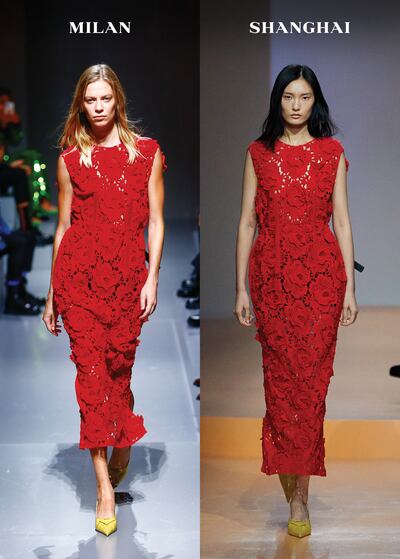
In Paris, Olivier Rousteing celebrated 10 years at Balmain with a rousing collection of slashed body-con outfits in front of a raucous crowd of 6,000 people – real people, not fashion people. Balenciaga amusingly dressed its front row in its spring/summer 2022 collection, and the red carpet became the show. Pierpaolo Piccioli meanwhile took Valentino onto the streets of the Marais with models parading past neighbourhood cafes and restaurants to create a more inclusive event, while Gabriela Hearst’s Chloe collection was modelled on the banks of the Seine.
Some designers showed off-piste, with Bottega Veneta taking its spring/summer 2022 collection to Detroit, although its creative director, Daniel Lee, exited the brand soon after. Michele Alessandro celebrated Gucci’s links with cinema with a show on Hollywood Boulevard that coincided with the release of the House of Gucci film.
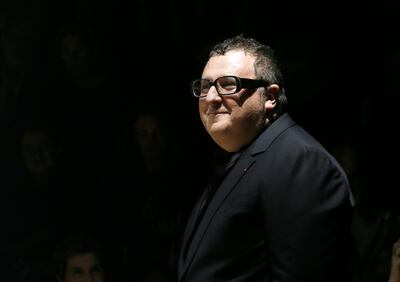
But attempts to return to some semblance of normality were interspersed with moments of sadness. In April, designer Alber Elbaz, 59, died from Covid-19 only months after launching his new AZ Factory project. In tribute, 45 top designers contributed a look honouring Elbaz in a special show that capped off Paris Fashion Week.
Then, in November, Virgil Abloh, 41, founder of Off-White and creative director of menswear at Louis Vuitton died suddenly after a private battle with a rare cancer. His planned fashion show in Miami went ahead two days later in his honour. As a much-needed beacon of change and inclusivity in the industry, his death was mourned by many.
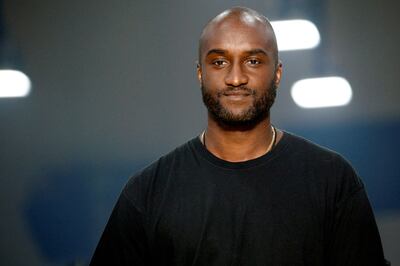
Only three weeks earlier Abloh had been in Doha on the jury for the prestigious Fashion Trust Arabia Awards, part of a roll call of international judges that included Piccioli, Elie Saab, Olivier Rousteing, Naomi Campbell, ex-Vogue Paris editor Carine Roitfeld and photographer Juergen Teller.
The event was further testimony of the global recognition that the region is finally receiving and illustrated the changes that have been sweeping the industry over the past couple of years, with fashion’s power players at last embracing diversity and inclusivity – not a moment too soon.
